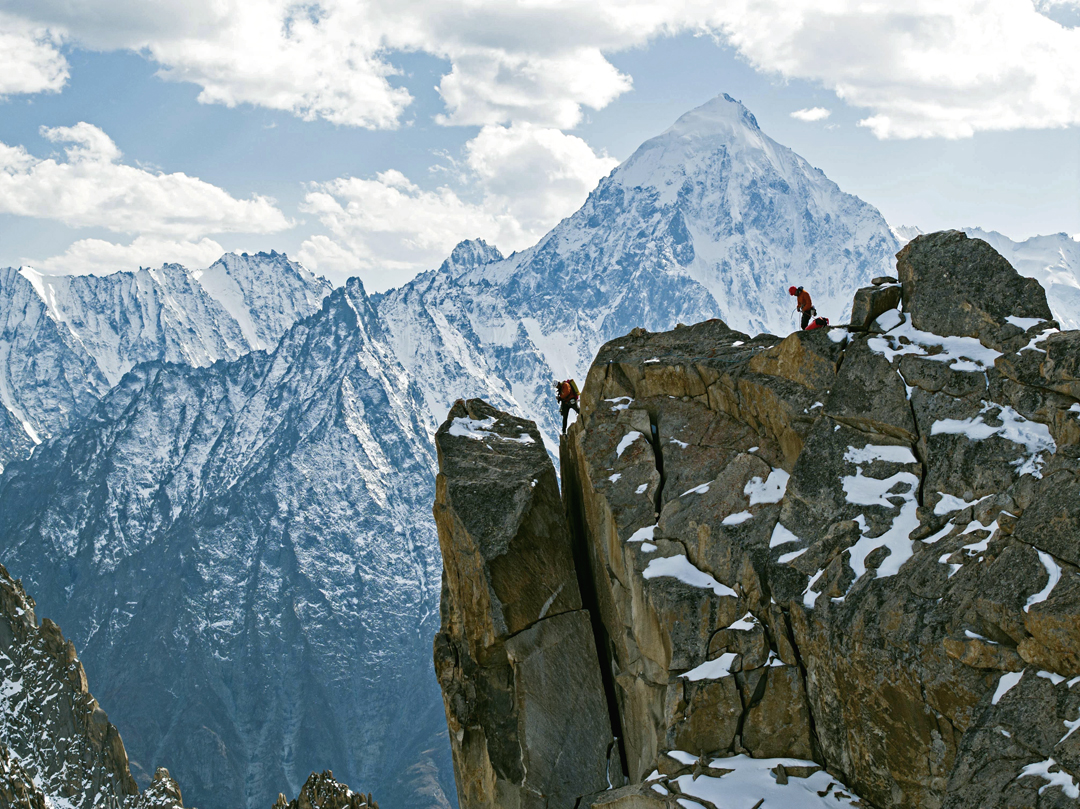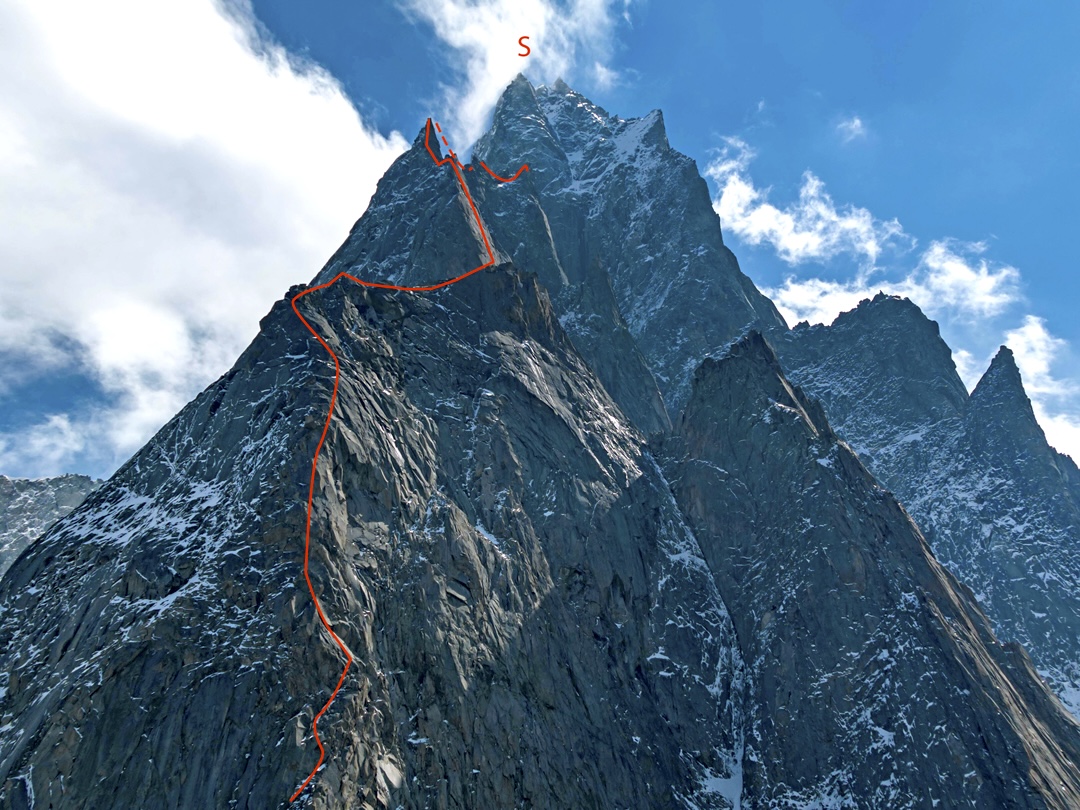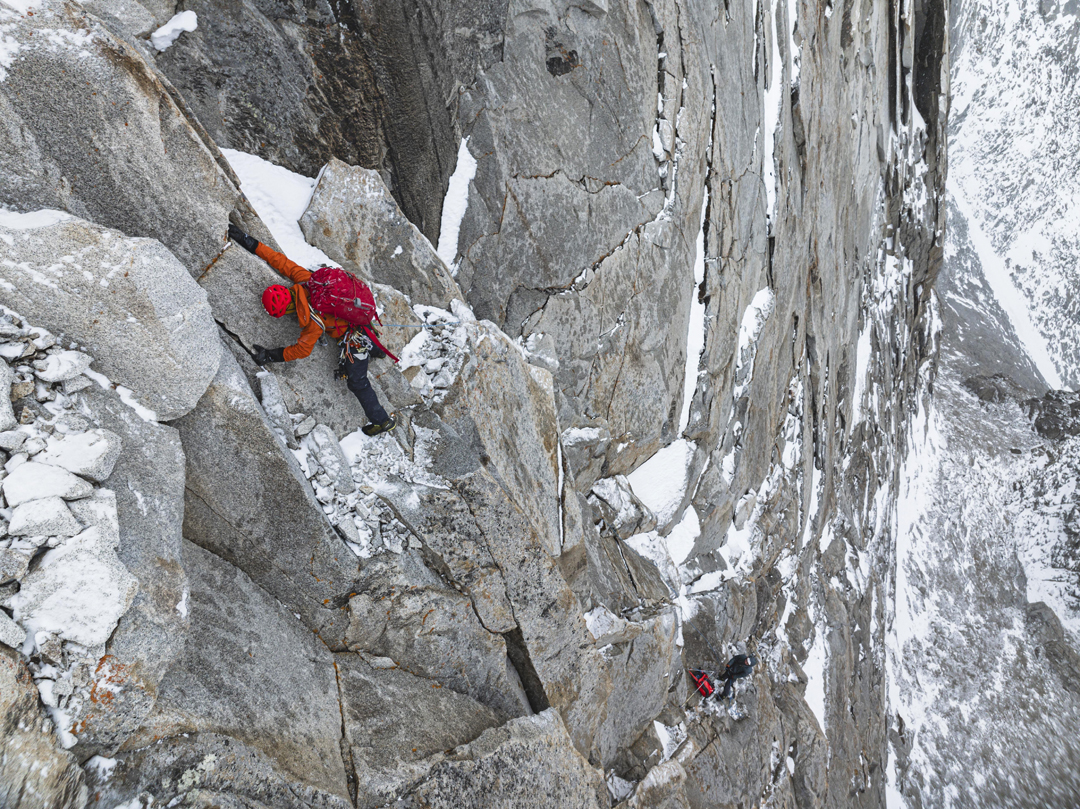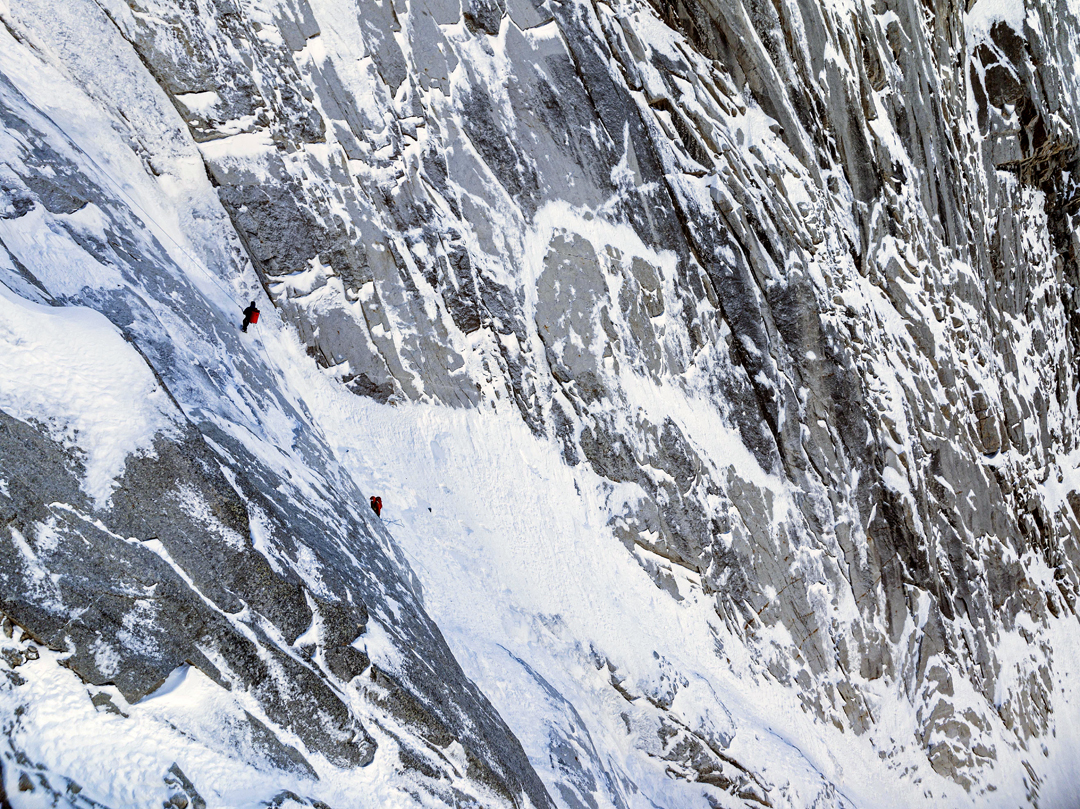Koz Sar Group: Sachban Sar, West Ridge, Attempt
Karakoram, Batura Muztagh

At the end of the summer, Ryo Masumoto, Takaaki Nagato, Takemi Suzuki (photographer and filmmaker), Katsutaka “Jumbo” Yokoyama, and I drove via Ishkoman to the Karambar Valley, an area little frequented by mountaineers. We had a permit and met with the authority in charge of the area, who said, “You are the first foreigners here since I have held this position. I hope you guys enjoy the climbing.”
One hour’s drive farther along, we were turned back by a military check post. We returned to Gilgit and negotiated with the army for three full days until a commanding officer arrived from Skardu and gave us permission to proceed.
Ryo and Takaaki sought a steep big wall they would climb with portaledges but were unable to find a good objective quickly. They did no climbing but eventually discovered a good objective and will return for it in 2025.
Jumbo and I opted for an alpine-style ascent of a rock peak west of Koz Sar and immediately above the Karambar Valley. Locals refer to it as Bokh Parit, while the Jerzy Wala map of the area designates it Sachban Sar (5,398m).
On September 29, Jumbo and I established a 3,500m advanced base at the start of the west ridge. On our first day of climbing, we scrambled and climbed loose rock over an initial top, then continued up solid rock to just below the first tower on the ridge. We struggled to find a bivouac spot but eventually found a passable site at 4,500m and put up the tent at 9 p.m.
On day two, we climbed a steep section on aid—it was too cold to free climb. After four pitches on a sharp arête, we had to make a couple of rappels, losing 100m of altitude. This led to a perfect bivouac at 4,800m, just below the second tower. The next morning, it was snowing heavily. The rock above was sound, and the climbing wasn’t difficult, but it was wet and icy, and our progress was slow. Eventually, we traversed onto the north flank, where a snow slope allowed us to cut a tent site.
At first, on the following day, the steep ridge above looked unclimbable, but Jumbo found a way through via a tiny crack (number 0.1/0.2–sized cams). We then simul-climbed until we met at a belay and discussed how loose it had all become, with dangerous, unstable, refrigerator-sized blocks that we couldn’t avoid.
A little farther on, we hit the final headwall, which towered above with no obvious crack system. My altimeter said 5,000m. We soon decided to retreat. Putting on our hiking boots and thin gloves, we made 20 rappels down the north face, constantly in the path of spindrift avalanches, to reach the glacier below.
—Genki Narumi, Japan




